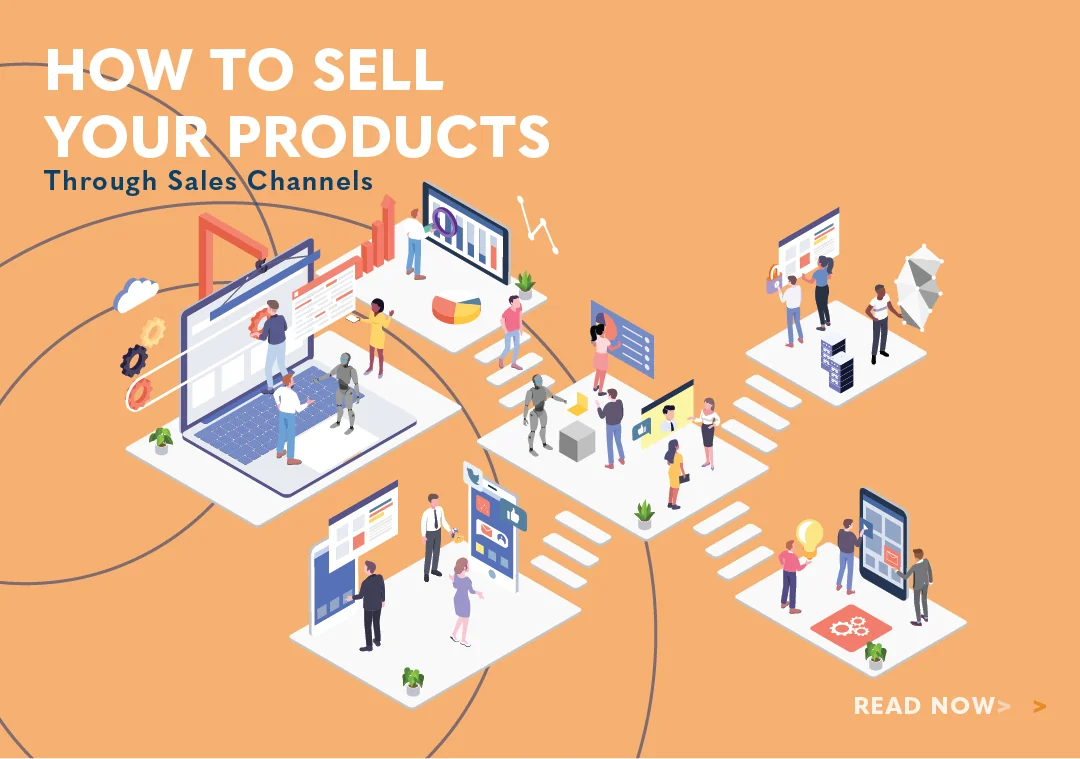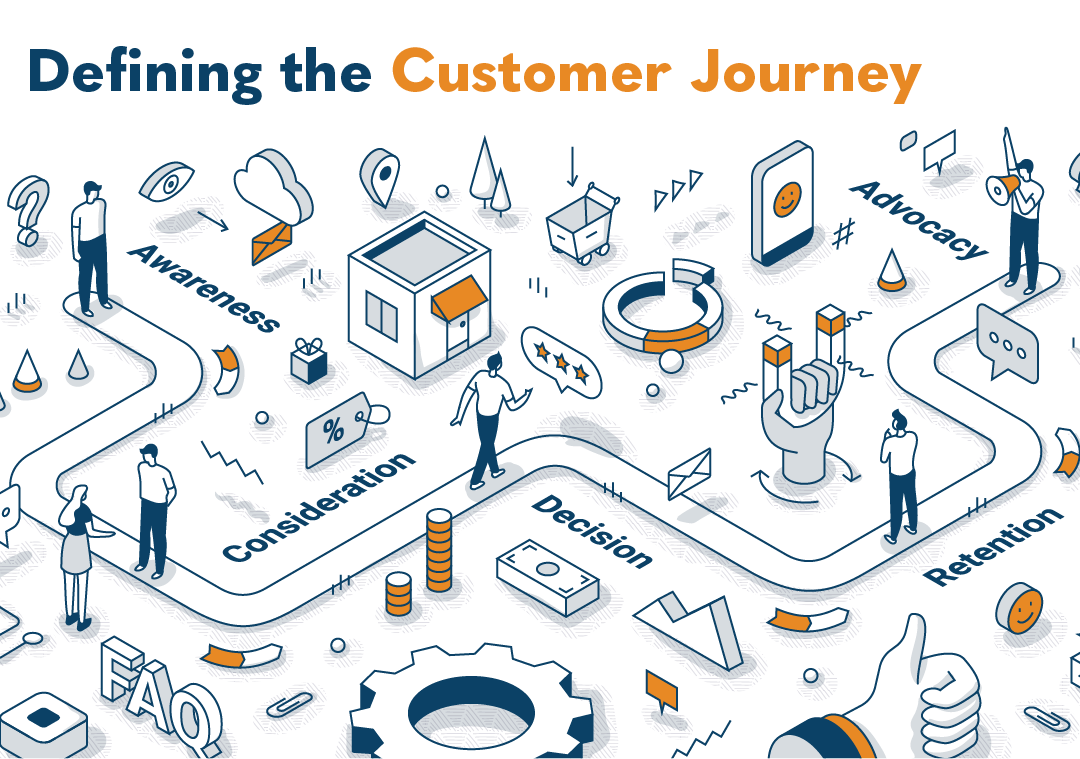How to Sell Your Products Through Sales Channels

All sales organizations want to sell more products. This will be as true in the future as it was in the past. Of course, one way is to hire more sales reps. But with the time and cost of recruiting, onboarding, and training new reps, this can be prohibitive.
Another way is through channel sales or third-party partners. While direct selling has its advantages, it’s not always enough for today’s changing markets. In fact, according to research cited by McKinsey, current B2B customers use more than ten channels to interact with suppliers. That’s a lot of business you might not reach with a limited sales force. Of course, all channels are not right for all organizations. But there are numerous benefits to branching out.
Our white paper, The Ultimate Guide to Developing a High-Performance Sales Organization, lists channels under sales strategy. Here, we go deeper. We’ll discuss what they are and examine the pros and cons of selling through sales channels.
What Are Sales Channels?
Sales channels are the methods a business utilizes to sell its products and services. This supplements a traditional “direct” sales team that works for the manufacturer and marketer of a product.
A sales channel partner is an outside agent or company that sells and distributes your products. They do not work for you in the sense of direct salespeople. Instead, they work for their own interests. Often, they have their own products or services that align with yours or market other external products in addition to yours.
On paper, this can seem like a win-win situation. Your products and services are exposed to already established markets. They can be positioned with complementary products to add value. And channel partners can reduce your sale team’s workload to drive new business more efficiently.
With the multitude of channels available, it can be tempting to pursue as many as possible. However, while sales channels can offer many benefits, all channels are not for all organizations. Today, most choose two or three that most benefit their needs. Here are some factors to consider before entering a channel agreement:
Complimentary Products: Your products must mix well with your channel partner’s offerings. They need to complement each other as an added value you both offer customers. For example, you can see the benefits of Ziggy’s Zippers teaming with Bonita’s Buttons. The same is true for financial services organizations partnering with life insurance companies.
Market Alignment: Your channel partner’s ideal customers should also align with your own. They should have similar interests and buyer personas. They must be a good fit for your offerings to increase the value of both your own and your partner’s products.
Experience and Expertise: Ideally, your channel partner should be as expert in their space as you are in yours. In this, you should remember you’re positioning your brand to align with theirs. An established blue-chip partnering with a small, rising startup can work wonders for both. However, it can also make an uncomfortable fit. Often, channel sales partners work best when one specializes in an area that complements the other. For example, a computer software company teaming with a hardware manufacturer.
Sales Process: To be efficient, sellers must tailor their sales process to their buyer’s buying process. In the same way, your sales organization should align your sales process to the channel partner. Of course, both organizations should stick with what works for them. However, to work together, you must understand them. Seek ways to blend the two. This makes for quicker decision making and speeds the sales cycle.
Commitment: For any partnership to strive, both parties must be equally committed. They must work together and compromise to achieve win-win outcomes. Before choosing a channel partner, ensure they share your goals. Also, be sure their timeframe matches your own. For example, your short- and long-range plans are similar.
The Pros and Cons of Channel Sales Partners
As with everything that affects your sales organization, you must examine the risks vs. the rewards of sales channels. Here are some pros of utilizing channel sales:
Trust: A channel sales partner may already have an established brand identity. They often come with a built-in customer base. This saves on marketing costs and provides instant credibility for your products. It also establishes you as a stronger competitor in your space. After all, a partner with a solid reputation adds a layer of trust for customers.
Efficiency: One channel partner can cut the cost of hiring countless sales professionals. Plus, you’ll avoid the additional expenses of time, resources, and money in seeking, hiring, and onboarding fresh talent. This can make your existing sales team more efficient and productive.
Experimentation: With channel partners, you can take chances with your products and marketing. Also, your products will be available to a new segment of customers. This opens avenues to explore in marketing your products and services and lets your team get creative.
More New Business: Channel sales partners can assume the time and expense of training customers, implementing solutions, and handling service calls. This frees your in-house sales team to devote more time to prospecting new business opportunities.
Added Value: Finally, channel partners give your customers more options. These can include choices in delivery and service. As a result, your reps can provide additional value when selling your products.
Of course, channel partners can also present hurdles or hoops. These can be challenges for sales teams. Here are some cons to consider:
Less Control: With a channel partner, your organization has less control over the sales process. At the very least, you share the responsibility with your partner. This means your sales team may not maintain the same close relationships to which they’re accustomed. They may no longer be in positions to just call their contact and smooth rough edges.
Brand Risk: In addition to less control over the sales process, you relinquish some control of your brand. Your sales team is no longer responsible for day-to-day client relations. If your channel partner drops the ball, earns a bad reputation, or mismanages relationships, your brand could suffer.
Reduced Profits: In addition to sharing the control and risk, you’re also cutting into your profits. While this could save money on acquiring new customers, you’re earning less from each sale. You might sell more but make less than you would alone.
Slower Updates and Changes: When you add a partner, you can no longer just update your sales process or implement long-term plans. These things become much slower and require additional planning and/or approval. In addition, you’re no longer just asking your team to adapt to new changes. You’re asking an entire other organization to adapt.
Removed From Feedback: Channel partners add a barrier to your customers. As you’re no longer in charge of the sales process, you’re also a step removed from feedback. Whether positive or negative, your customer feedback is filtered through your partner. Like the old game of telephone, your knowledge of their experiences may or may not be accurate. Also, this hinders your ability to respond.
Competition: In addition to the load and the profits, you’re sharing your piece of the pie. While you may find the relationship satisfactory, how long until your partner wants a larger slice? Like any old-time sales rep partnered with a rookie, you may soon wonder if you’re training your competition. Worse, are you training your replacement?
Common B2B Sales Channels
Now, let’s look at some top channel partners and what they can do for you:
Resellers: A reseller buys a product from the company that manufactures it and resells it to customers. They are an intermediary between producer and consumer. Typically, resellers handle the logistics of order taking, shipping, and fulfillment. In addition, they are then the consumer’s primary contact for service and additional orders.
Affiliate Partners: Affiliate partners promote another’s products and services. This is often via a website or social media platforms. They then receive a commission on the sale.
White Label: This is when your products are rebranded under the reseller’s name. For example, most products at Trader Joe’s are rebrands of a larger manufacturer’s own products. They offer an inexpensive alternative to the more familiar name brand.
Distributors: Distributors are another type of intermediary between producers and consumers. They are typically agents, websites, and businesses that provide products directly to customers.
Wholesalers: Wholesalers are distributors who typically have their own sales reps. They specialize in getting products from producers directly onto store shelves. A popular wholesaler is Costco. They buy directly from manufacturers, typically in bulk, and sell to consumers from their own locations or website.
Value-Added Resellers: Value-added resellers specialize in buying and reselling technology from manufacturers. They then add features or upgrades as additional value for consumers.
Independent Retailers: Independent retailers are usually stand-alone stores that sell an array of products. They are not affiliated with manufacturers.
Dealers: Dealers work differently than retailers in that they specialize in one distinct type of product, rather than an array of similar products. Consider automobile dealerships. At a Cadillac dealer, you will only see Cadillacs.
Agents: Agents are intermediaries between buyers and sellers. They do not have an ownership stake in the products they sell. For example, a real estate agent. They do not own the property; however, they facilitate the negotiation.
Importers and Exporters: These channels are specialists in importing and exporting products from foreign countries for use by consumers in another country. They assume the complex burden of logistics and paperwork.
Consultants: Channel consultants do not directly sell anything. Rather, they connect retailers, manufacturers, and venders and assist in the creation of sales channels for a smooth process.
For most sales organizations, nothing tops the intimacy of direct selling. After all, your sales team is most familiar with your products. They have witnessed the manufacturing, participated in testing, and conducted the demos. They have developed a rapport and established relationships with your customers. However, they are limited in their reach. Of course, you could just hire more sellers. But with onboarding, coaching, and training, this is as time consuming as it is expensive.
That’s what makes sales channels so attractive. In most cases, they cost less but accomplish more. Rather than replacements for traditional salespeople, they can be cost-effective additions to your distribution strategy. We hope this helps determine if sales channels are right for your organization. And, if so, may you achieve greater success with the channels you choose.
To achieve more, check out our white paper The Ultimate Guide to Developing a High-Performance Sales Organization.

- Account Planning (11)
- Awards (49)
- Client Testimonial (37)
- Personal Branding (19)
- Podcast (11)
- Research (70)
- Sales Career Development (87)
- Sales Coaching (156)
- Sales Consulting (137)
- Sales Culture (170)
- Sales Enablement (354)
- Sales Leadership (109)
- Sales Management (248)
- Sales Negotiation (16)
- Sales Prospecting (125)
- Sales Role-Playing (18)
- Sales Training (235)
- Selling Strategies (263)
- Soft Skills (70)
- Talent Management (94)
- Trusted Advisor (27)
- Virtual Selling (49)
- Webinar (9)


























